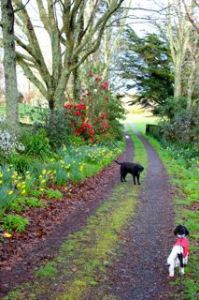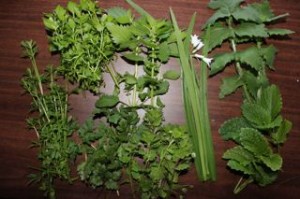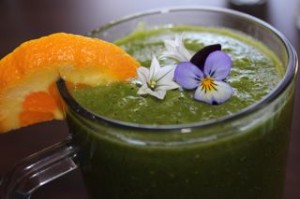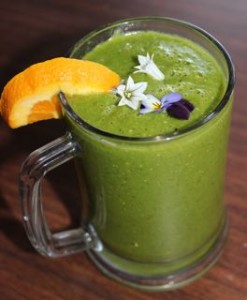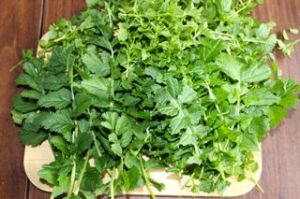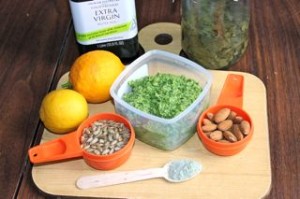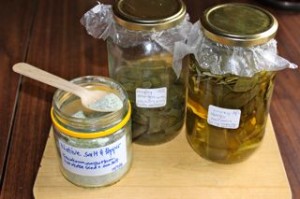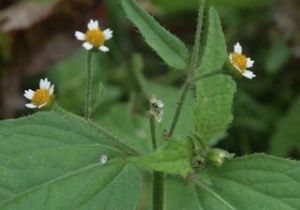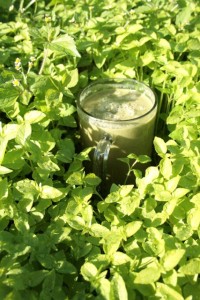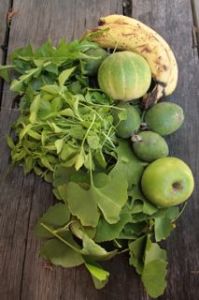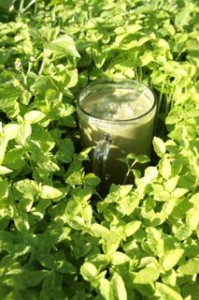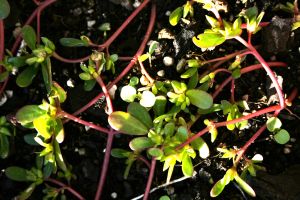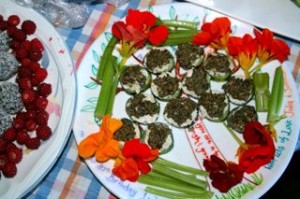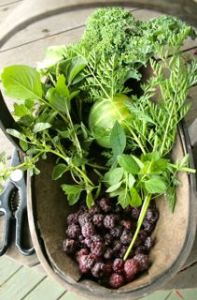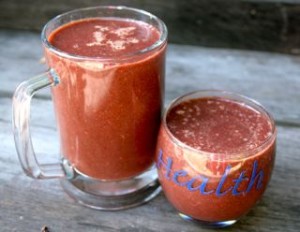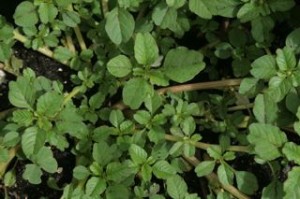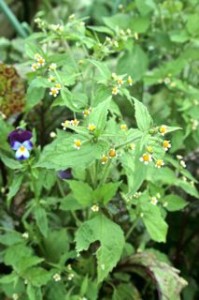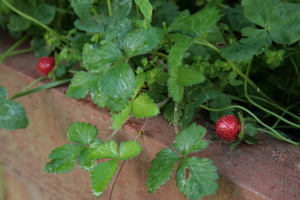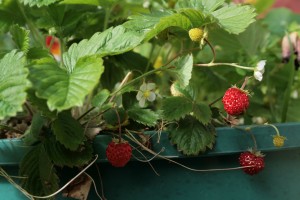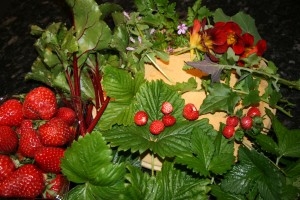Greetings everyone,
Spring is definitely here on the farm where I’m living with daffodils and some rhododendrons out along the drive. They look so vibrant and bright, revealing that the season has changed and everything is starting to burst forth.
This is also true in the ‘weed’ world as you’ll notice, all the weeds are looking very lush at the moment. It’s an excellent time to make a smoothie using plants that have suddenly gone crazy with longer daylight hours and warmer temperatures. They’ll help you have a good old clean out of your system as we move out of winter and provide necessary minerals and vitamins, fibre, anitoxidants, enzymes and cleansing chlorophyll.
This morning I picked a selection for a recipe for a:
Spring Clean Smoothie
Cleavers (left) cleans lymph & blood; Chickweed (top left) nourishing, calming, strenghtening, Ca & Vit C; Herb Robert (second from left) immune builder, energy giver, oxygen carrier; Stinging nettle (centre) blood building & blood cleansing, highly nutritious.Onion weed (second from right) antimicrobial,tonic, sulphur; Speedwell (bottom centre) clears excess mucus, clears sinuses. Puha (top right) Vit & mineral boost.Lemon balm (bottom right) Flavour. More information on identifying and information about each plant are in my ebook. If you don’t already have it you can purchase it for $9.95 here.
Method
Chop greens and place in the blender. I added 2 cabbage leaves as well with the stalks removed.
Add the juice of 1 large grapefruit
1/2 cup Kombucha (this is the webpage of my friend Jane who does workshops on Probiotic Cultures)
2 cups water
Blend until the greens are broken down. Add 2 small bananas or 1 large, 1 apple, 1 kiwifruit (scrub off the hairs and remove top and bottom), 1 whole orange. I also added 1 Tbl chia and 1 tsp pumpkin seeds ground in a coffee grinder.
Blend again and voila you have just created a mouth watering, nutritious cleansing smoothie! Onion weed flowers and viola flower with a piece of orange to decorate your smoothie.
